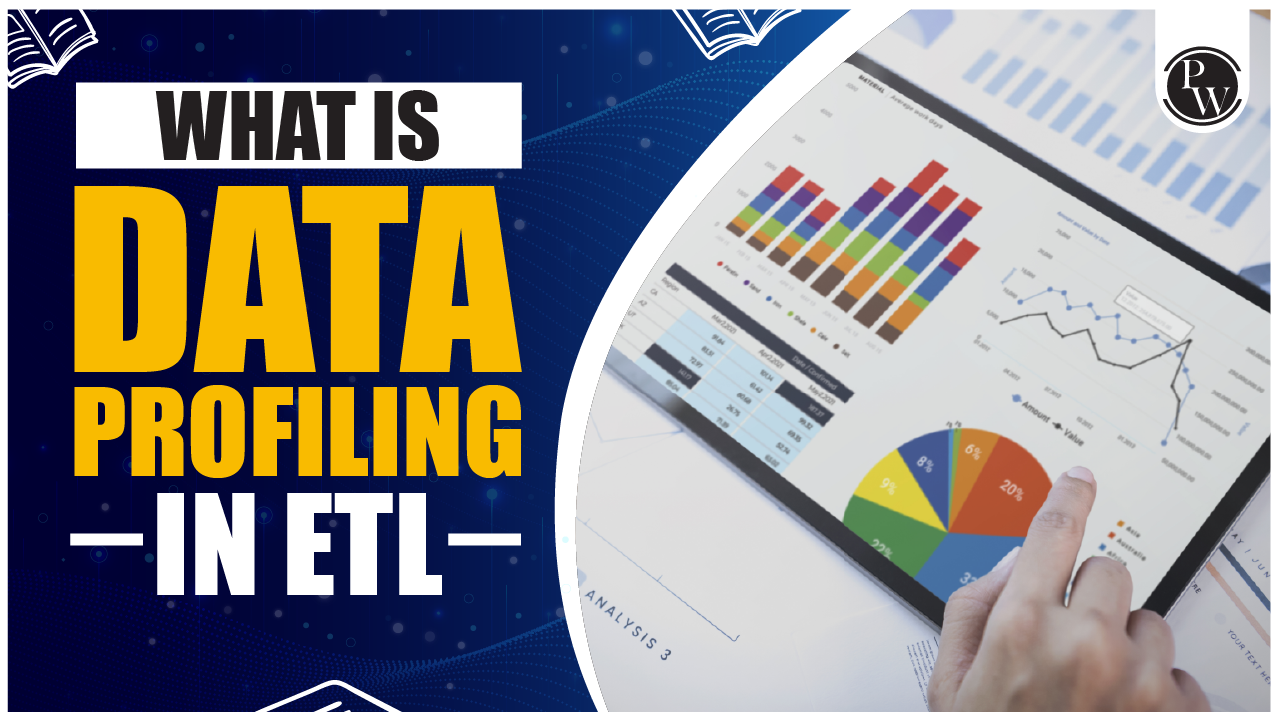The worth of your data relies on how effectively you sort out and examine it. As data becomes more extensive and comes from various sources, it becomes crucial to assess its content and quality. Surprisingly, only around 3% of data meets quality standards, which means that companies with poorly managed data suffer significant losses in terms of time, money, and untapped potential.
This is where Data Profiling comes into play as a powerful tool to combat bad data. It involves monitoring and cleansing data to enhance its quality and gain a competitive edge in the market. In this article, we delve into the process of data profiling, its definition, tools, and technologies, and explore how it can assist businesses in resolving data issues.
Data Profiling
Data profiling, also known as the process of examining source data and understanding its structure, content, and interrelationships, plays a significant role in the world of data analysis. By using a set of business rules and analytical algorithms, data analysts meticulously analyze data for discrepancies.
This allows them to interpret how these factors align with business growth and objectives. Data profiling is crucial for businesses as it helps determine data accuracy, validity, risks, and overall trends. It helps eliminate costly errors in customer databases such as missing values, redundant values, and values that do not follow expected patterns. The valuable insights gained from data profiling empower companies to make critical business decisions.
In practical terms, data profiling is often used in conjunction with the ETL (Extract, Transform, and Load) process for data cleansing and moving quality data from one system to another. For example, when data is being moved to a data warehouse, data profiling can identify which data quality issues need to be addressed in the source and which issues can be resolved during the ETL process.
Data analysts follow a systematic approach when performing data profiling. They collect descriptive statistics like minimum and maximum values, count, and sum. They also gather information about data types, length, and patterns that occur repeatedly. Data is tagged with keywords, descriptions, and types for better organization.
Data quality assessment and risk evaluation are carried out to identify potential issues when joining data. Metadata is discovered and accuracy is estimated. Additionally, distributions, key candidates, functional and embedded-value dependencies are identified, and inter-table analysis is conducted to gain deeper insights into the data.
Recommended Course
- Decode DSA with C++
- Full Stack Data Science Pro Course
- Java For Cloud Course
- Full Stack Web Development Course
- Data Analytics Course
Data Profiling Tools
Data profiling tools are essential for businesses to analyze and understand the value of their data assets. These tools can handle various types of data, from big data to structured and unstructured data, making it easier to undertake large-scale data projects efficiently. Some of the top data profiling tools include:
IBM Info Sphere Information Analyzer: This widely-used tool allows users to assess data quality, content, and structure. It offers features like column analysis, primary key analysis, natural key analysis, foreign key analysis, and cross-domain analysis.
SAP Business Objects Data Services (BODS): This tool combines data quality monitoring, metadata management, and data profiling in one package. It helps identify data inconsistencies and problems before transforming them into actionable insights. Key features include column profiling and relationship profiling.
Informatica DF and Quality Solution: Informatica is known for its fast data profiling capabilities and in-depth analysis. It offers automated discovery functionalities, reducing specification and testing cycles for the IT team. It also supports data governance procedures.
Talend Open Studio: This suite of open-source tools provides advanced data analytics without the need for coding. It offers customizable data assessment, fraud pattern detection, graphical chart analytics, and time column correlation.
Oracle Enterprise Data Quality: This tool offers features like data profiling, auditing, dashboards, standardization of fields, automation of matching and merging, address and product data verification, and integration with Oracle Master Data Management.
Choosing the right data profiling tool depends on business goals, strategy, and data quality cost. It’s essential to evaluate the features and capabilities of each tool to find the best fit for your business
Types of Data Profiling
To effectively analyze and improve the quality of your data, there are three main types of data profiling that you should consider:
Structure Discovery: This involves validating the consistency and proper formatting of your data. It includes performing mathematical checks such as calculating sums, finding minimum or maximum values, and ensuring that data is correctly structured. By using structure discovery, you can gain insights into how well your data is organized. For example, you can identify what percentage of phone numbers in your dataset do not have the correct number of digits.
Content Discovery: Content discovery focuses on examining individual data records to uncover any errors or inconsistencies. It helps identify specific rows within a table that may contain problems and reveals systemic issues present in the data. For instance, content discovery can help you identify phone numbers without area codes or any other data inconsistencies within your dataset.
Relationship Discovery: Relationship discovery involves understanding how different parts of your data are interconnected. It helps you identify key relationships between tables in a database or references between cells or tables in a spreadsheet.
This understanding of relationships is crucial for effectively utilizing your data. It allows you to combine related data sources into a unified format or import them in a way that preserves important relationships.
By utilizing these three types of data profiling, you can gain valuable insights into the structure, content, and relationships within your data. This knowledge helps you identify and resolve data quality issues, ensuring that your data is reliable and valuable for decision-making purposes.
PW Skills Provide Various Platform
Frequently Asked Questions
Q1. What is data profiling, and how does it work?
Ans. Data profiling is the process of examining and analyzing data to gain valuable insights. It involves summarizing the data to uncover issues, risks, and trends. For example, a company may analyze sales data to identify patterns, anomalies, or errors. By collecting statistics, data types, and patterns, data profiling helps businesses understand the quality and characteristics of their data.
Q2. How do I perform data profiling?
Ans. Data profiling involves several steps:
- Collecting descriptive statistics like minimum, maximum, count, and sum.
- Analyzing data types, length, and recurring patterns.
- Tagging data with keywords, descriptions, or categories.
- Assessing data quality and the risks associated with joining the data.
- Discovering metadata and evaluating its accuracy.
Q3. What are the stages of the data profiling process?
Ans. The data profiling process typically includes the following stages:
- Profiling inputs: Gathering the necessary data for analysis.
- Decision process models: Establishing the framework for analyzing the data.
- Crime assessment: Evaluating the quality and characteristics of the data.
- Criminal profiling: Identifying patterns, inconsistencies, and anomalies in the data.
- Investigation: Digging deeper into the data to gain deeper insights.
- Apprehension: Taking action based on the insights gained from data profiling.
Recommended Reads
Data Science Interview Questions and Answers
Data Science Internship Programs





